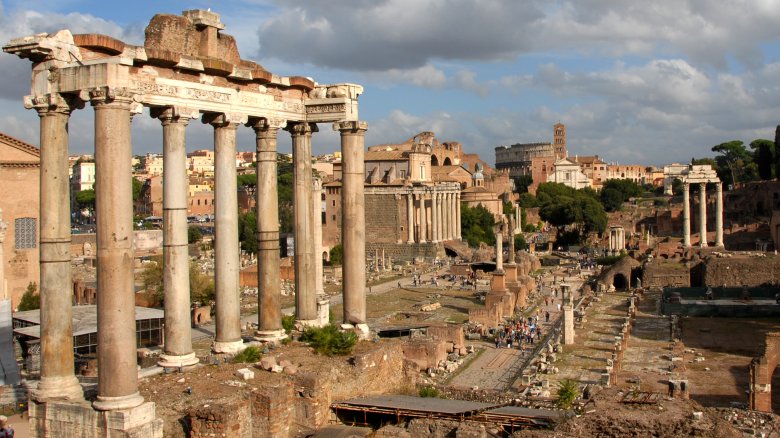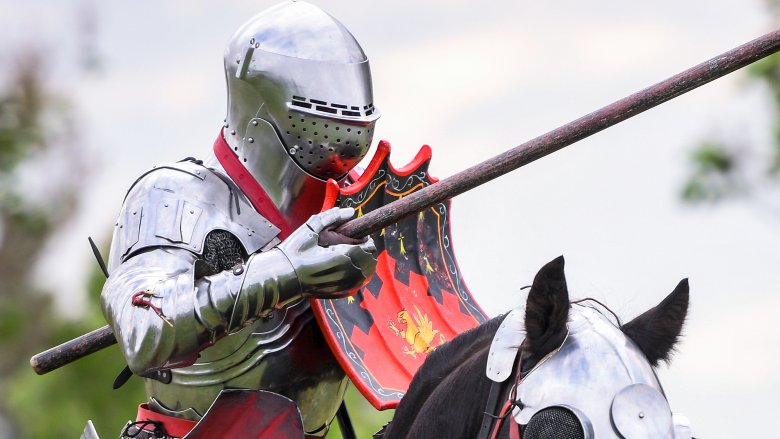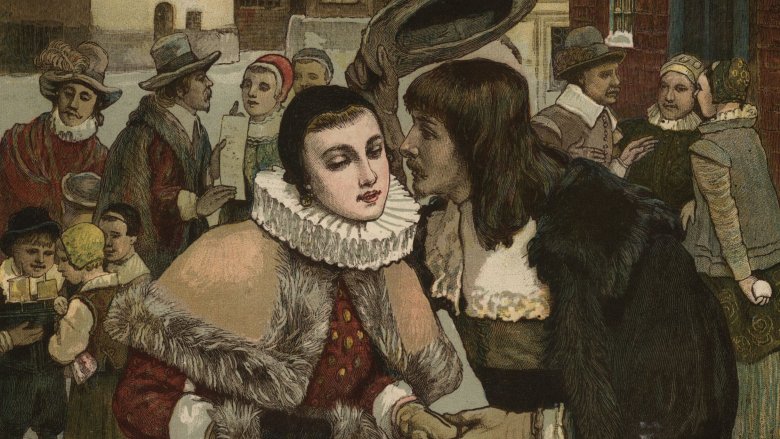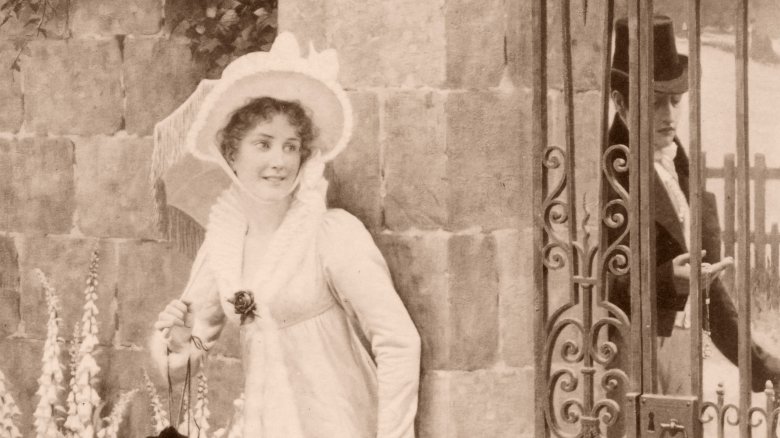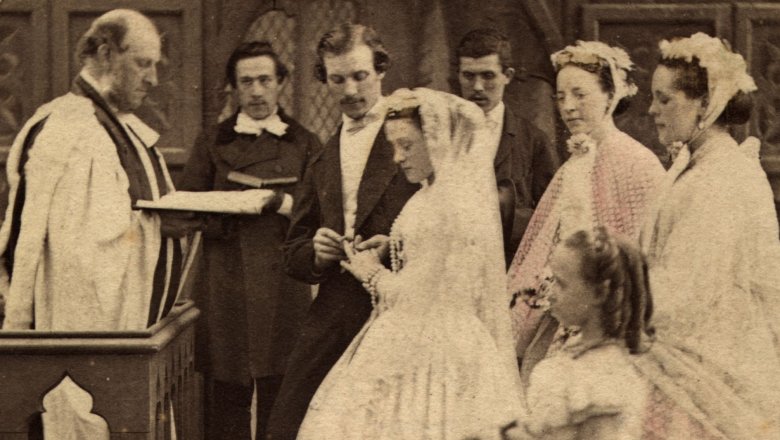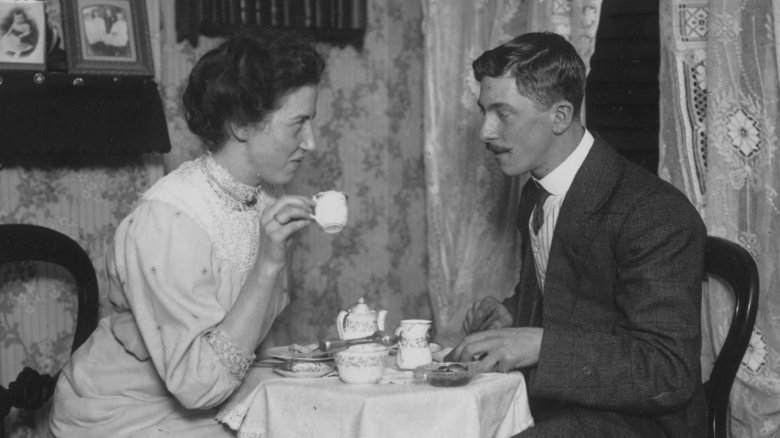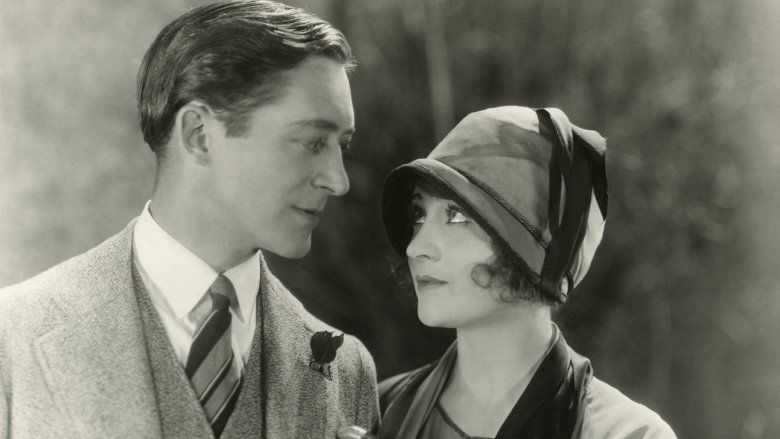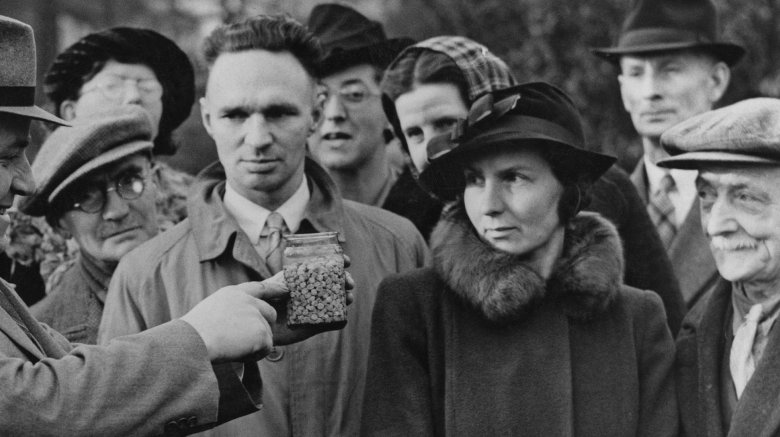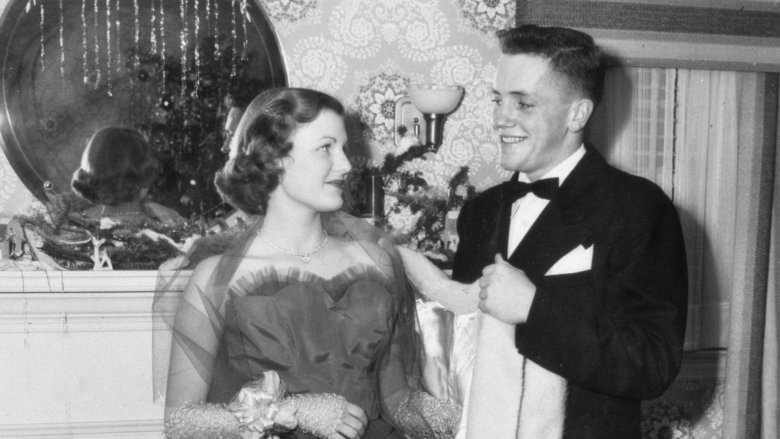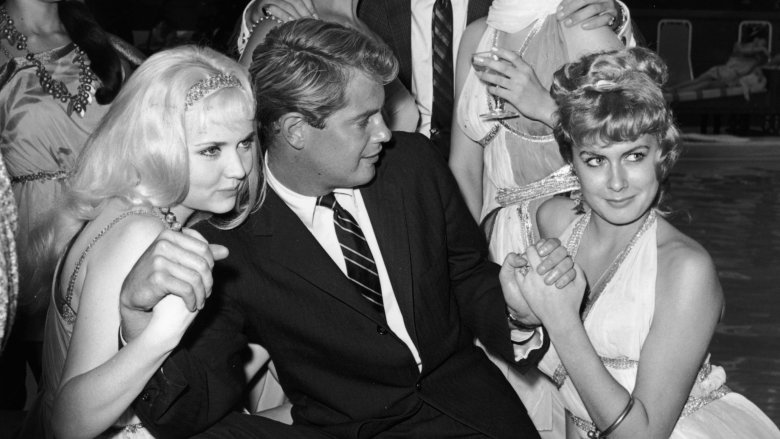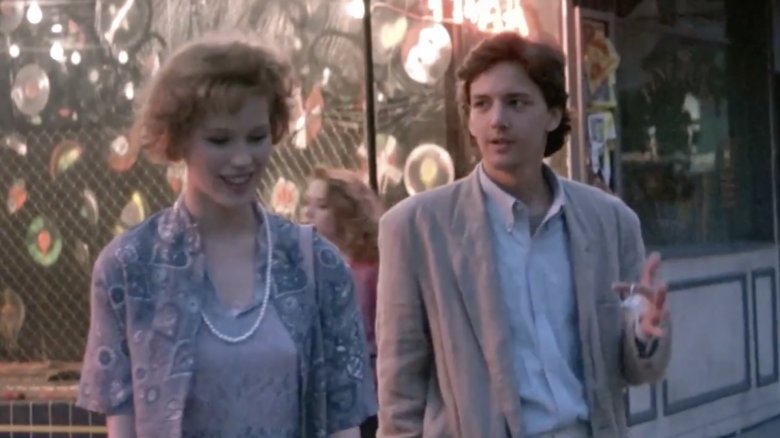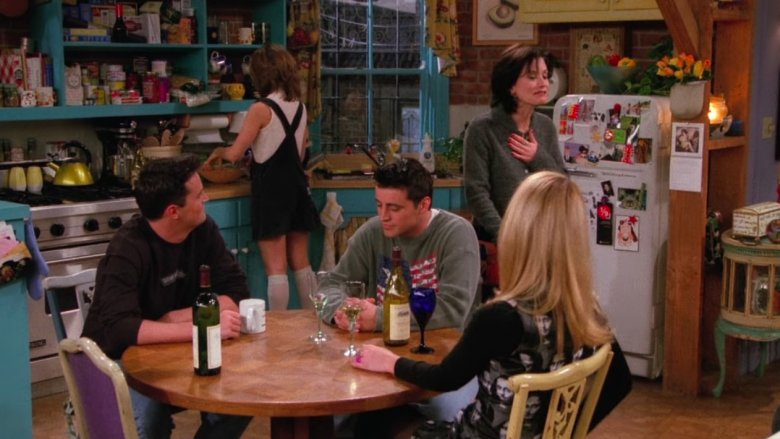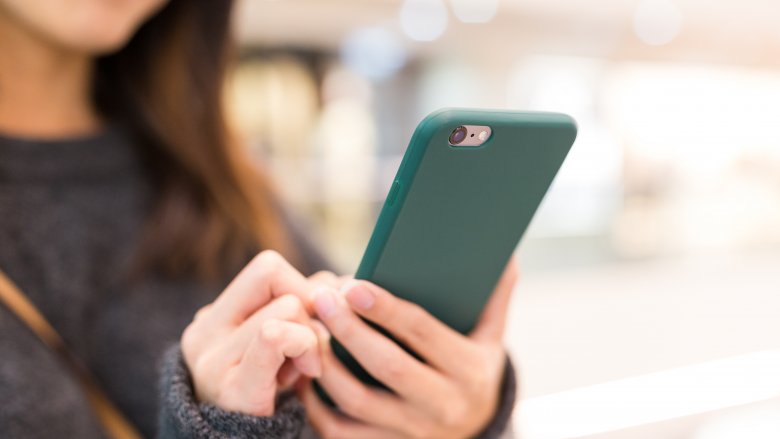How Dating Has Changed Through History
We may receive a commission on purchases made from links.
It's no secret that dating in today's world involves meeting someone online or through a dating app more than almost any other way. Sure, people still meet in bars, through friends, or even at work, but dating apps have taken a lot of the guesswork out of modern dating. In fact, the overall attitude towards dating apps has drastically shifted over the years, according to the Pew Research Center. That being said, dating apps, and even online dating in general, are relatively new concepts in the world of love and romance. With the rise of technology, the way that people meet each other and get to know each other has completely changed. In fact, looking back, a lot has changed in the world of dating over the course of history.
Historically speaking, dating has changed in many, many ways over the centuries. Gone are the days of forced couplings, medieval jousting, and antiquated courtships. In today's world of dating, it's an equal playing field, for the most part. But years and years ago, that wasn't the case. So, let's take a look back at all the ways dating has changed throughout history.
Dating in ancient times was definitely primitive
In ancient times, dating wasn't really even a thing. Believe it or not, back in ancient Rome, women didn't have a whole lot of authority over themselves or their lives. According to Psychology Today, women in ancient Rome "could not vote or assume public office, and upper class women in particular were largely confined to running the home." That said, there weren't a lot of sparks flying back in ancient times. "A woman married soon after puberty, and her highest duty, both to her husband and to Rome, was to bear a vigorous son who might one day follow in his father's estate," Psychology Today shared.
Moreover, the Romans largely had control over female sexuality, which means women didn't have much say in their personal lives. And as their highest calling was to marry and have a son, it's clear that love and romance — and even dating — weren't really all that important in ancient times. People didn't need to get to know each other, because women's opinions weren't a concern unfortunately.
Dating in the Middle Ages was a little more romantic
As time went on, dating and romance became a lot more prominent. While men weren't showing up outside of women's homes with flowers and chocolates just yet, they were still vying for the love and attention of women they found attractive. According to the Ancient History Encyclopedia, men literally fought over women in the Middle Ages, and jousting "was an important opportunity for heraldic display, general pageantry, and the chance for a knight to impress aristocratic ladies who might show them favour by giving them their scarf or veil."
Honestly, it's better than forced couplings of ancient times, and it probably felt pretty romantic to be a woman for whom a man was jousting! Of course, this wasn't exactly "dating" as we know it today, but it's clear that the ideals of dating were progressing through time, and, during the Middle Ages, it clearly wasn't just about producing male heirs.
Throughout the 1600s and 1700s, dating was all about logistics
During the 1600s, dating and marriage were all about logistics. According to Psychology Today, Americans in the 1600s were especially concerned with money and power — and how they could use marriage to grow their interests. The concept of love wasn't especially important to people during this time. In fact, according to Psychology Today, "Protestant ministers warn[ed] spouses against loving each other too much, or using endearing nicknames that will undermine husbandly authority." How sweet?
The importance placed on family interests remained true for a while, as Psychology Today reported that, in the 1700s, European "women must consider money when choosing a partner." Clearly, it was important for people to weigh the pros and cons before marrying. Love was more of an afterthought, and courting was all about the idea of families merging money, power, and land, according to History.org. Again, it's not exactly romantic, but courtships were definitely the beginning of modern dating.
Dating really blossomed in the 1800s
Any lover of romance has likely read at least one Jane Austen book, and there's a reason for that. The famed author was known for being able to perfectly capture how it felt to be in love, even in a time when relationships were fraught with drama and the pressures of social class. All of Austen's books were set in the 1800s, and they were all published during that time period and focused on love. Clearly, Austen was on to something.
In the 1800s, courting was still pretty important, but the characters in Austen's books often fell in love — real love — and it was kind of a big deal. In Austen's novel, Northanger Abbey, Catherine Morland laments that "to marry for money I think the wickedest thing in existence." While it's true that the logistics of a relationship were still important in Austen's day, love and dating just for fun were starting to become more accepted.
Courtship became commonplace in the 18th century
Throughout the 18th century, courtships were still frequent. However, women began to assert more power over their love lives as time went on. Like the Jane Austen novels, not every young woman who was of courting age immediately married the first man who courted her. According to History.org, many young women viewed their late teens and early 20s as prime time to have fun and live their best lives. In fact, the website noted, "While women might begin courting as early as fifteen or sixteen years of age, most ... deferred marriage until their early twenties."
Basically, courting was starting to become more fun — more like today's dating — rather than just an obligation. However, marrying for power, money, and land still mattered. "Young people rarely courted far from their social class, and respected parental opinions most of the time," History.org noted. The main difference between the courtships of the late 1700s and early 1800s and those of the 1600s was that women had more power and independence, though not nearly as much as women have today.
Dating was frowned upon for a while in the 1900s
Just before the turn of the century, the term "date" as it's known today was first coined, according to the New York Post. In 1896, George Ade, who was a writer for the Chicago Record, wrote about a young woman filling up the "dates" in her calendar with outings with young men. After that, women dating eligible bachelors became increasingly common. However, in the 1900s, there was a little bit of an adjustment period as society as a whole got used to the fact that a woman could be out alone with a man and not be a prostitute.
According to the book Labor of Love: The Invention of Dating by Moira Weigel, single women going out on dates at the time caught the attention of law enforcement and not in a good way. "In the eyes of the authorities," Weigel wrote, according to New York Post, "women ... making a date seemed the same as turning a trick." A woman living it up was an odd thing back in the day, but, fortunately, times have changed.
During the '20s, dating could be pretty thrilling
It's no secret that as soon as something becomes illegal or off-limits, it automatically becomes all that more fascinating. Such was the case with prohibition, which wasn't exactly surprising. Still, with the passage of the 18th amendment in 1919, alcohol became illegal, and it also became that much more exciting. "Young couples snuck off to underground speakeasys [sic] and both women and men carried concealed flasks, filled to fuel the night's escapades," noted HuffPost. Yes, speakeasies were real, and they were apparently super romantic, as they made for a great place where couples could get together and have some fun. Even if it was illegal fun.
Additionally, the number of people who owned a car drastically increased in the 1920s, meaning that young couples could hit the road for a night on the town and take their dates somewhere new, or just go for a nice drive and enjoy the scenery. Basically, dating during the 1920s was super fun..
World War II soon impacted dating
With the start of World War II in 1939, the concept of dating drastically changed. Many young men were shipped off to fight in the war, so women had to go back to being more logical when it came to marriage prospects. "Women became less concerned with a man's status and more interested in his likelihood of survival," according to a since-removed article on Sex Info Online, a site run by students at the University of California. "Marriage also experienced a revival and was subsequently reabsorbed into youth culture: Marriage rates rose and average ages of married couples declined." This was true for most of the 1950s, as "by 1959 almost half of all women were married by age nineteen," according to the book Marriage, a History: How Love Conquered Marriage by Stephanie Coontz.
Women wanted to make sure that their relationship would last after the war, so they wanted a husband who was strong and could provide. With war looming overhead, the 1940s and 1950s saw people settling into relationships quickly and thoughtfully.
In the 1950s, tradition ruled over dating
After World War II came to an end, Americans started to especially value the traditional family mold even more. "By the end of the 1950s, even people who had grown up in completely different family systems had come to believe that universal marriage at a young age into a male breadwinner family was the traditional and permanent form of marriage," Stephanie Coontz wrote in Marriage, a History: How Love Conquered Marriage. Because of this, the concept of "going steady" also grew in popularity.
Due to the increased importance placed on marriage and family, young teenagers started "going steady" during the 1950s. "Men in the relationship would make their arrangement visible to outsiders by gifting his date a letterman jacket or a class ring, and the girl expected to be called and taken out on dates a certain number of times each week," according to since-removed article on Sex Info Online. Dating was more formal during the 1950s, and was hopefully just the first step before a proposal and marriage.
The 1960s brought about a sexual revolution in the dating world
However, all of those rules for dating and the traditional roles in a relationship started to wear on people by the 1960s. During the 1960s and 1970s, individual freedom rose in popularity, and women's rights took a drastic turn. As noted by History.com, the 1960s were huge for women in America. In 1963, President John F. Kennedy signed the Equal Pay Act, which assured women that they would get paid the same as men for doing the same job.
Additionally, the birth control pill was approved for contraceptive use in 1960. According to PBS, by 1962, 1.2 million American women were using the pill, and it wouldn't be long until even more women started using it. This brought about a sexual revolution and allowed women to be more in control of their bodies, forever changing the landscape of dating and premarital sex. Having sex before marriage rose drastically during the 1960s, and the 1963 novel The Feminine Mystique by Betty Friedan also set off a dramatic change in how women viewed dating, according to History.com.
In the 1980s, dating became a lot more relaxed
After the sexual revolution of the 1960s and 1970s, the 1980s were all about having fun with dating. If you've learned anything from popular '80s movies like Pretty in Pink and Sixteen Candles, let it be that romance was alive and well in that decade. Dating was fun! It involved dancing, having adventures, breaking the rules, and even hooking up with no strings attached.
In fact, according to The New York Times, the term "hook up" really changed in the 1980s. "But not until the [1980s] did the meaning change to a less formal sexual involvement," the paper reported. "It was first defined as 'to pick someone up at a party' and then progressed to 'become sexually involved with; to make out.'" Young people were going out on dates, having a fun time, and maybe even getting it on afterwards. Dating could be totally casual, something different than the formal courtships of the past.
Dating in the 1990s was all about spontaneity
During the 1990s, the internet was still a novel concept, and not many people had access to it. Instead, they went out to bars to find dates. Think of the ever-popular sitcom Friends, and you have a perfect example of how people dated in the '90s. There were coffee shop meet-ups, blind dates, and, well, lower expectations. As noted by The Washington Post, "In the 1990s, you couldn't Google someone you just met. You hadn't already read their social media. You had no expectations about what they might be like (unless you were set up by a friend who kept telling you how great their friend was, and those set-ups almost never worked out)." The paper added, "You literally got to meet people face to face."
All those lowered expectations meant that dating in the 1990s could be more relaxed and spontaneous. Additionally, with the popularity of hook-ups on the rise as well, dating became truly revolutionary for its time.
Dating in the 2000s saw the invention of "talking"
If you were a 2000s —or even late '90s — baby, you probably know what it means to "talk" to someone, and we don't just mean have a casual conversation. In the 2000s, cell phones were becoming more and more common, and so it also became normal for two people to get to know each other before their first date. According to Psychology Today, dating in the 2000s and 2010s looked a lot like this: "Boy meets girl (or boy). They text, message, or 'talk' (which is apparently some sort of code for not quite in a relationship, but not out of the realm of possibilities either)." They may also "hook-up," though what that meant exactly varied depending on location.
In the 2000s and 2010s, the concept of dating kind of went out of style. Things became more relaxed, and labels were rejected. "Dating may occur, but will more likely be referred to as 'hanging out,'" Psychology Today noted. Dating was a lot more casual, and, with the ease of texting, dating became something you only really did if you wanted to get married in the near future.
Today dating apps are all the rage
Finally, in the modern world, dating apps rule all. Internet dating is still popular, but dating apps like Tinder, Bumble, and Hinge are all the rage. Fortunately, all of the stigma surrounding online dating has pretty much vanished. According to the Pew Research Center, "nearly half of the public knows someone who uses online dating or who has met a spouse or partner via online dating — and attitudes toward online dating have grown progressively more positive." Additionally, dating app Tinder boasts about 66 million monthly users as of early 2021, according to Apptopia (via Reuters), so clearly meeting someone on your phone is the modern world's answer to falling in love — or at least finding a date.
Dating has changed a lot over the course of history, and, while technology has certainly played a role in that, societal roles have also shifted and given way to more freedom, self-expression, and experimentation when it comes to getting to know a potential partner. Who knows what the next few centuries will have in store!

